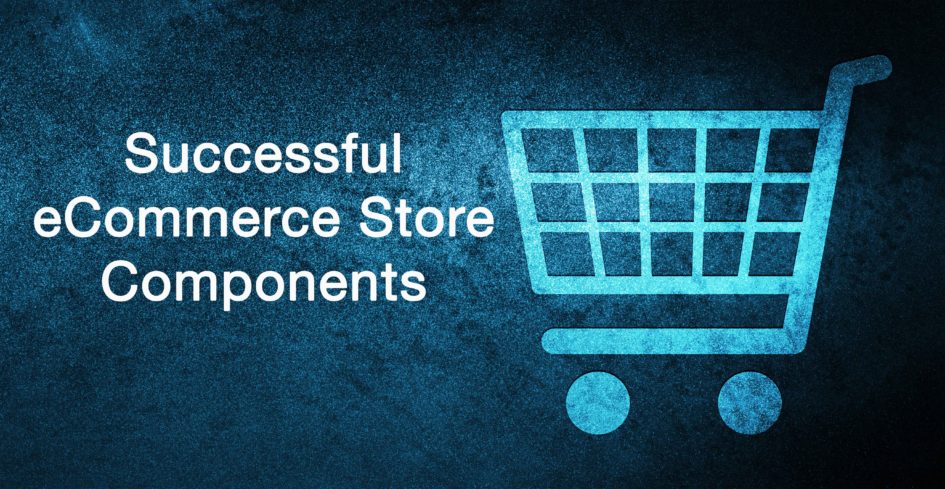As a business owner, you might have thought of the most critical parameters you need to ensure while building your B2B eCommerce store. In this blog, we will discuss a few recommendations for the major components you need to invest in to achieve a successful B2B eCommerce store. This in turn will guarantee you measurable results for your business.
Here are Three Major Components to Manage a Successful eCommerce Store:
1. Enhance the Overall Customers’ Shopping Experience
2. Personalize & Customize Customers’ Experience
3. Guarantee Customers Satisfaction
1. Enhance the Overall Customers’ Shopping Experience
1. Optimize your customer checkout experience:
To start with, no doubt, “cart checkout” is one of the most important and integral aspects of the overall customer journey.
Your goal should be to ensure that your shopping carts are optimized for smoother and faster hassle-free checkout. For example, if there are forms on your site, make sure they load quickly and smoothly. You can also provide your customers with the ability to pre-fill forms to expedite the process. Provide them with an intuitive and easy-filling experience for all the fields. Needless to say, the faster and smoother the checkout experience, the higher the conversion rate!
2. Provide an easy seamless shopping experience:
When it comes to eCommerce stores, the design for the user experience is integral for the success of any website. This includes, content, readability, design, and layout to ease finding key information. These are vital for accelerating the customer journey on the website. Thus, make efforts to enhance these elements to guarantee an easy and frictionless shopping experience right from product discovery to checkout. Also, do not forget about the speed of the website. Make sure your pages load quickly, as your customers have a limited attention span. Moreover, your site speed plays a vital role in scaling up your SEO ranking.
3. Build an Omnichannel strategy:
Building an Omnichannel strategy goes deeper than just being on “all channels.” It is about providing your customers with that seamless experience no matter what channel they use. Thus, your marketers, salespeople, and customer support reps will need to react according to your customers’ behavior. It is best to pursue a holistic approach — an omnichannel experience that your customers can use whenever and wherever they want. Allow your customers to access your online store at the convenience of their own choosing.

2. Personalize & Customize Your Customers’ Shopping Experience
Let’s start discussing what is eCommerce personalization. It simply refers to the process of creating and delivering a personalized shopping experience throughout the customer journey. To be more specific, you need to create dynamic content and include a customized lineup of products in your store. For example, monitor your customers’ shopping preferences and shopping behavior. This means tracking their previous orders’ history and search interests. As well as collecting key customer data such as demographics, preferred language, products they searched for in the past and location. By analyzing all this data, you can target your customers, send them personalized promotions and recommend products based on their interests and past purchases. Thus, your marketing team should make personalization a key priority. Furthermore, adopt personalized communication with your customers throughout the entire marketing funnel.
Nowadays, it is essential to provide multilingual features and multi currencies for your B2B customers, in order to retain them. If your website offers content in multiple languages, then your B2B customers find it more appealing to search for their desired products or services in their native languages. Especially, if your business caters to multiple countries, multilingual and multicurrency features are must-haves.
Likewise, building a personalized landing page builds your customers’ trust quickly. It is another way to help you win new customers.

Customize your Customers’ Shopping Experience
On the other hand, customization in eCommerce is mainly done by the customer. Your customers can customize and set their preferences on the storefront that meets their specific needs. For example, configure the content or functionality that reflects their shopping needs. Also, you can customize your products/services pricing as per your customers’ shopping behavior. B2B customers usually demand a flexible pricing strategy. That is to say, you need to provide them with customized quotes for their desired products or services that fit their exact requirements. But, if you have a ‘one-price-fit-all’ will be a major turnoff for your B2B customers. Therefore, it is very important to have a dynamic and intelligent pricing system in place that displays customized prices based on your B2B customers’ requirements.
3. Guarantee Customers Satisfaction
Indeed, it is vital to ensure your customers’ satisfaction in their shopping journey otherwise, you might be losing customers without even noticing. There are a few recommendations to do in order to guarantee your customers’ satisfaction.

- Provide a self-service customer support portal that answers the most FAQ your customers might have.
- Provide a chatbot function where your customers can connect with you if they have any questions
- Make returning just as easy as purchasing
- Recommend alternative products or services in case your customers can not find what they need
- Make sure to update all your product pages/links/information your customers will be checking regularly as accurate information is vital for retaining your customers
- Send follow-up emails/messages to your customers following a purchase
- Provide your customer updates with the shipping and delivery status
- Offer your customers easy and multiple payment options
- Leverage cross-selling and upselling offering other products or services recommended to customers according to their needs
- Highlight your positive customers’ reviews and testimonials as these are your free ambassadors and influencers
- Build your customers’ trust by utilizing social media to highlight your customers’ testimonials of your products, and share images to create a positive influence on your customers
In the end, no doubt, the ever-changing consumer shopping habits, and behavior are rapidly evolving. It impacts the way eCommerce operates today and will continue to do so in the future. Thus, we put together a few recommendations for key areas to invest in to build a successful eCommerce store and achieve measurable results. Yet there is more that can also be done. Indeed, you will need an eCommerce partner like DigiCommerce to guide you on how to optimize and enhance your customers’ shopping experiences. You can consult DigiCommerce technical experts today!

